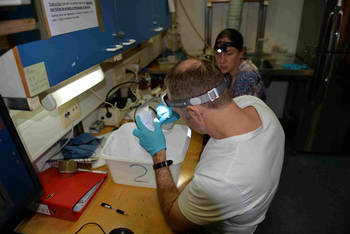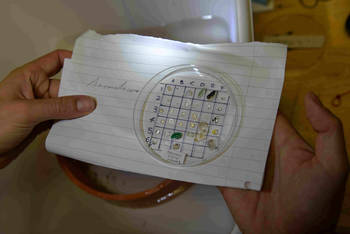The Nansen is currently researching microplastics and the neuston, the organisms and inorganic particles floating and living in the surface layers of the seas. Although plastic particles spread throughout the water column, this study focuses on surface microplastics in this unique environment.
The neuston habitat receives high concentration dosages of UV radiation, experiences severe temperature and salinity changes and bears waves’ mechanical force. Meanwhile, predators watch from both above and below. Due to this demanding environment, highly specialized organisms populate the neuston habitat.
For example, fish may practice a type of camouflage called countershading with bottoms mirroring the sun’s reflection and the top half of their bodies blending into the water.



